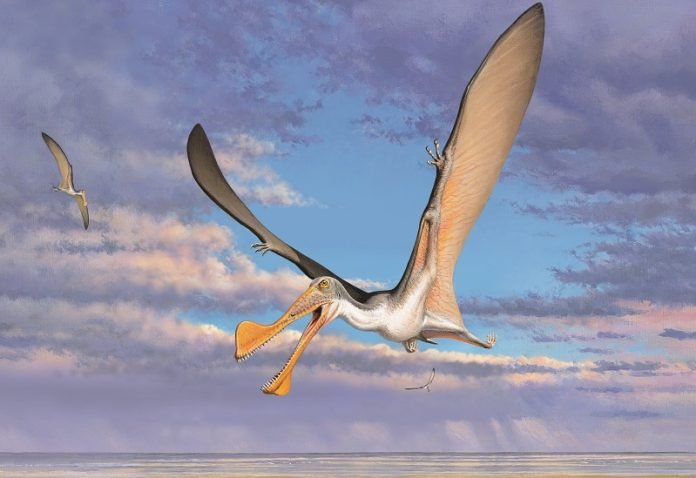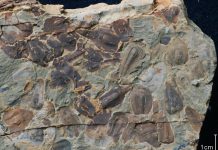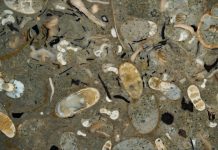
A team of scientists has recently made an exciting discovery in Australia, uncovering the oldest pterosaur bones ever found in the country.
These ancient bones, which date back an astonishing 107 million years, provide us with valuable insights into the lives of these magnificent flying reptiles that coexisted with dinosaurs.
The findings, published in the journal Historical Biology, are the result of a collaborative effort between Curtin’s School of Earth and Planetary Sciences and Museums Victoria.
The researchers examined a partial pelvis bone and a small wing bone that were originally discovered by a team led by Dr. Tom Rich and Professor Pat Vickers-Rich at Dinosaur Cove in Victoria back in the late 1980s.
By analyzing these fossils, the team identified that the bones belonged to two different pterosaurs. The partial pelvis bone came from a pterosaur with an enormous wingspan of over two meters.
Additionally, the small wing bone belonged to a juvenile pterosaur, marking the first-ever reported discovery of a young pterosaur in Australia.
Pterosaurs, which were close relatives of dinosaurs, were extraordinary creatures that roamed the skies during the Mesozoic Era, specifically the Cretaceous Period. At that time, Australia was situated further south than it is today, and Victoria, where the fossils were found, lay within the polar circle.
This meant that during winter, the region experienced extended periods of darkness. Despite these challenging conditions, pterosaurs managed to thrive and survive.
Lead researcher Adele Pentland, a Ph.D. student from Curtin’s School of Earth and Planetary Sciences, explained that these bones shed light on where pterosaurs lived and how large they grew. Pterosaurs are quite rare globally, and only a few remains have been discovered in locations like Victoria, which had high palaeolatitude during the Cretaceous Period.
The bones also confirmed the existence of the first juvenile pterosaur ever found in Australia. This young pterosaur lived around 107 million years ago, inhabiting the ancient forests of Victoria.
Although these fossils offer valuable insights into the lives of pterosaurs, many questions remain unanswered.
For instance, it is still unclear whether pterosaurs migrated north during harsh winters to breed or if they adapted to the polar conditions.
Answering this question will help scientists gain a better understanding of these enigmatic flying reptiles.
Dr. Tom Rich, from Museums Victoria Research Institute, expressed his delight in seeing the results of the research that stemmed from the hard work carried out at Dinosaur Cove several decades ago.
The fossils discovered there were the culmination of a decade-long, labor-intensive effort involving over 100 volunteers who excavated more than 60 meters of tunnel along the seaside cliffs.
The study was a collaborative effort involving researchers from Curtin’s School of Earth and Planetary Sciences, the Australian Age of Dinosaurs Museum of Natural History, Monash University, and Museums Victoria Research Institute.
By unearthing these ancient pterosaur bones, scientists have unlocked a fascinating chapter in the history of these incredible flying reptiles, offering us a window into their prehistoric world.
Source: Curtin University.



